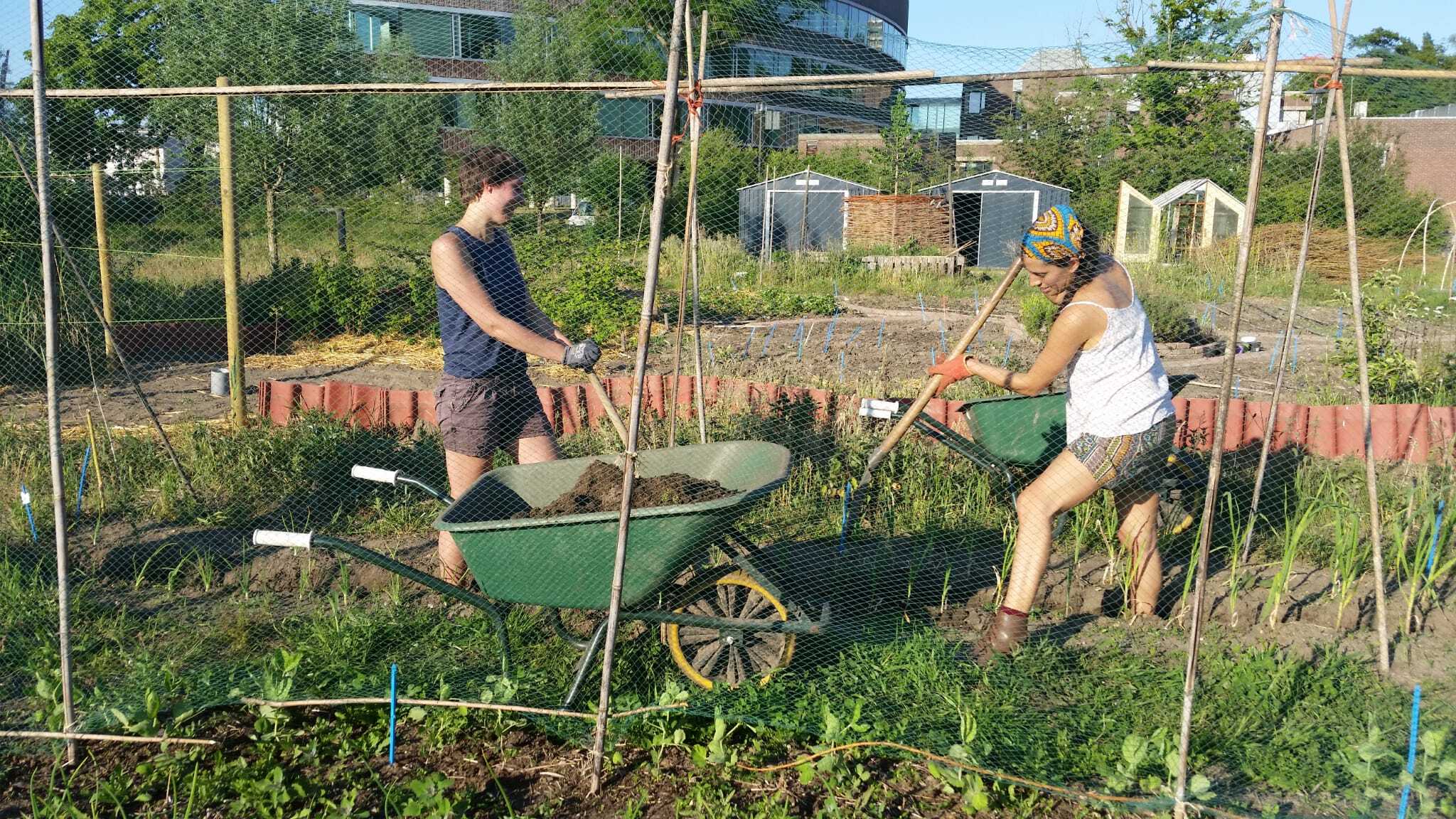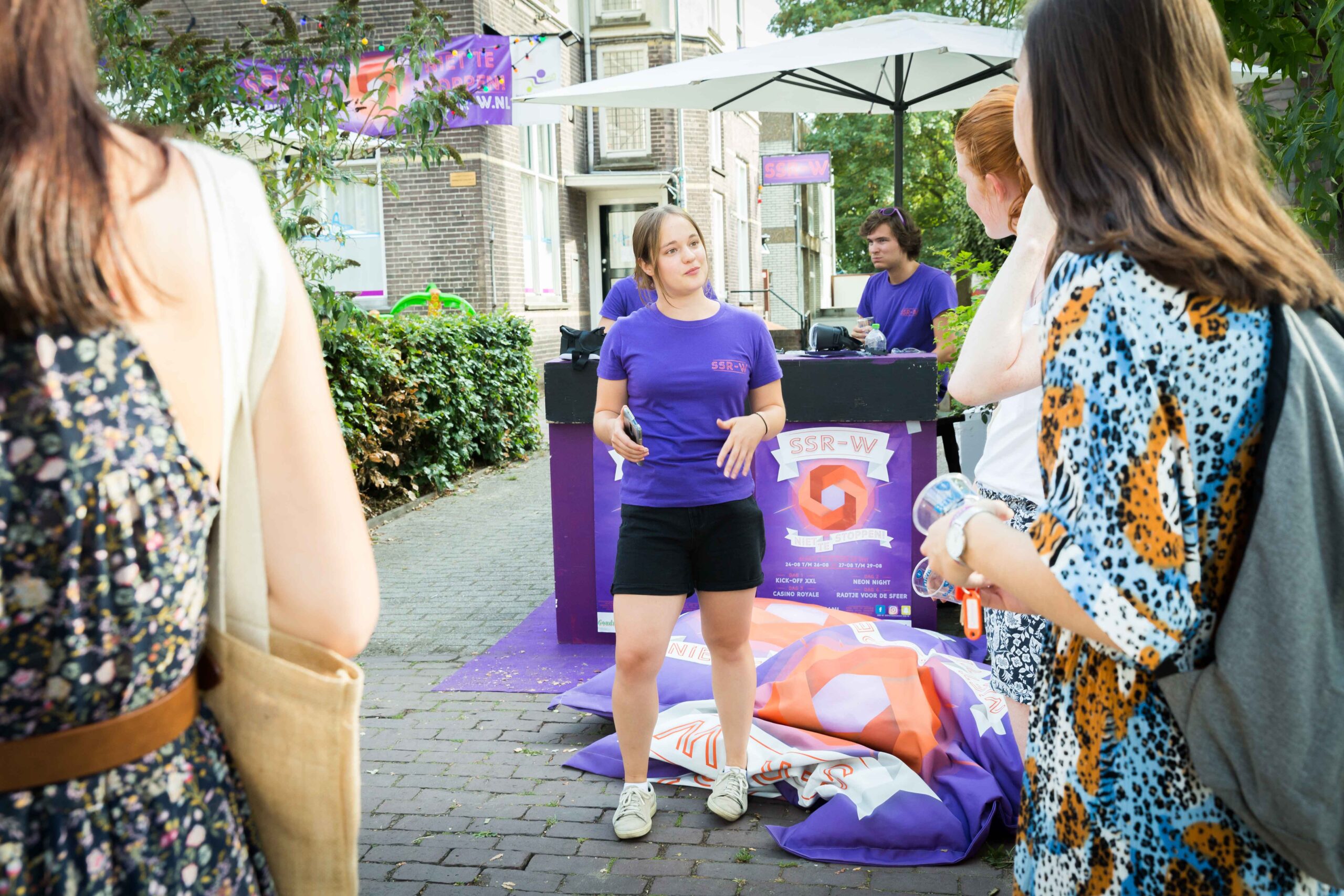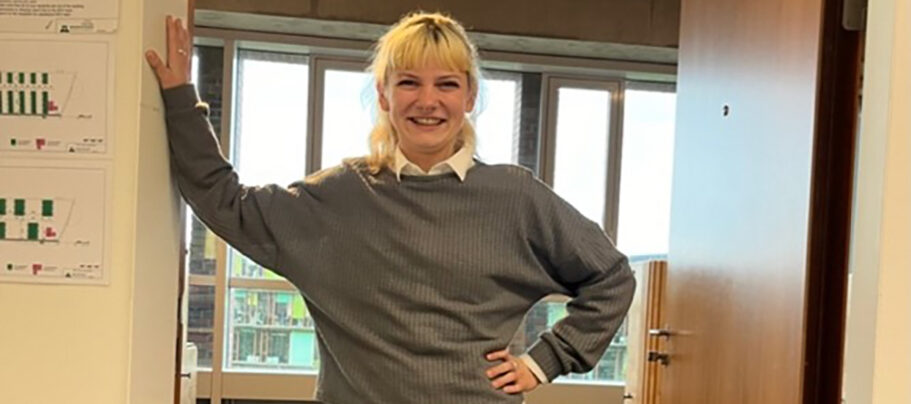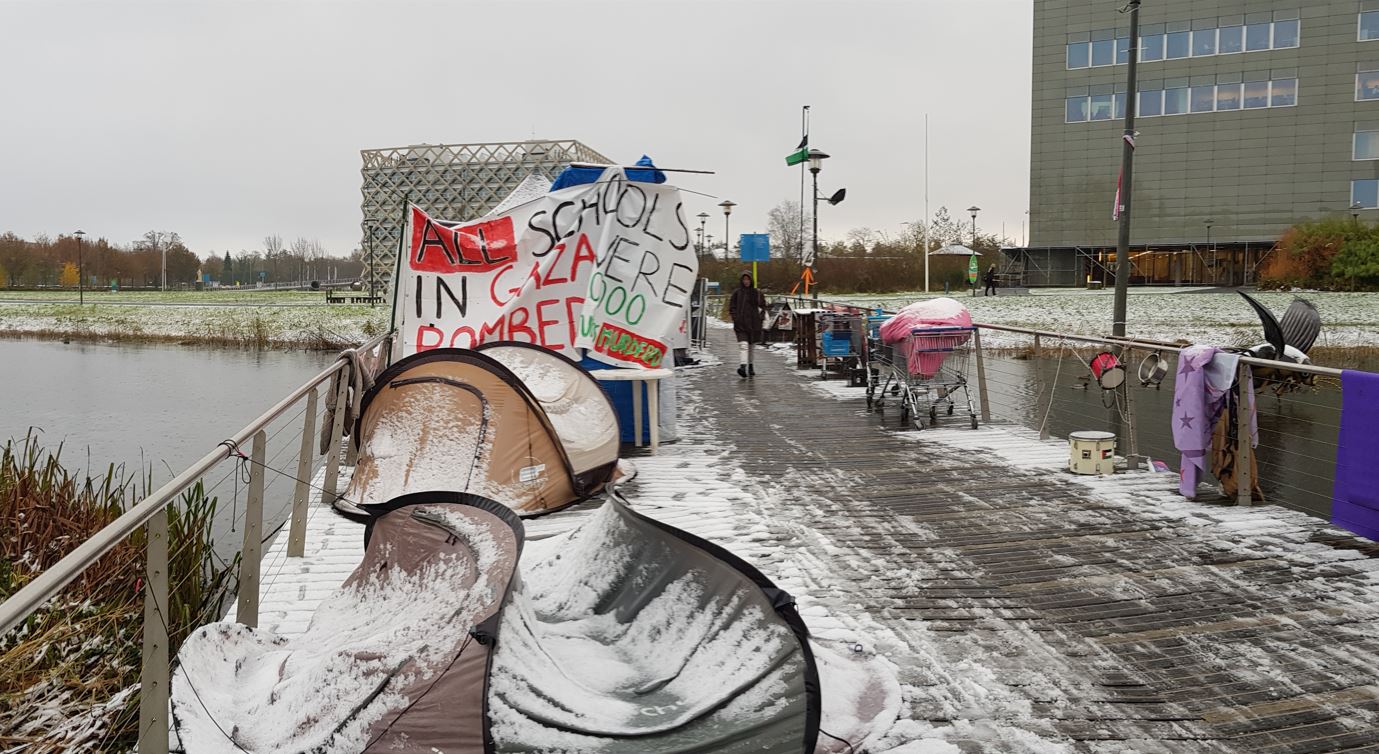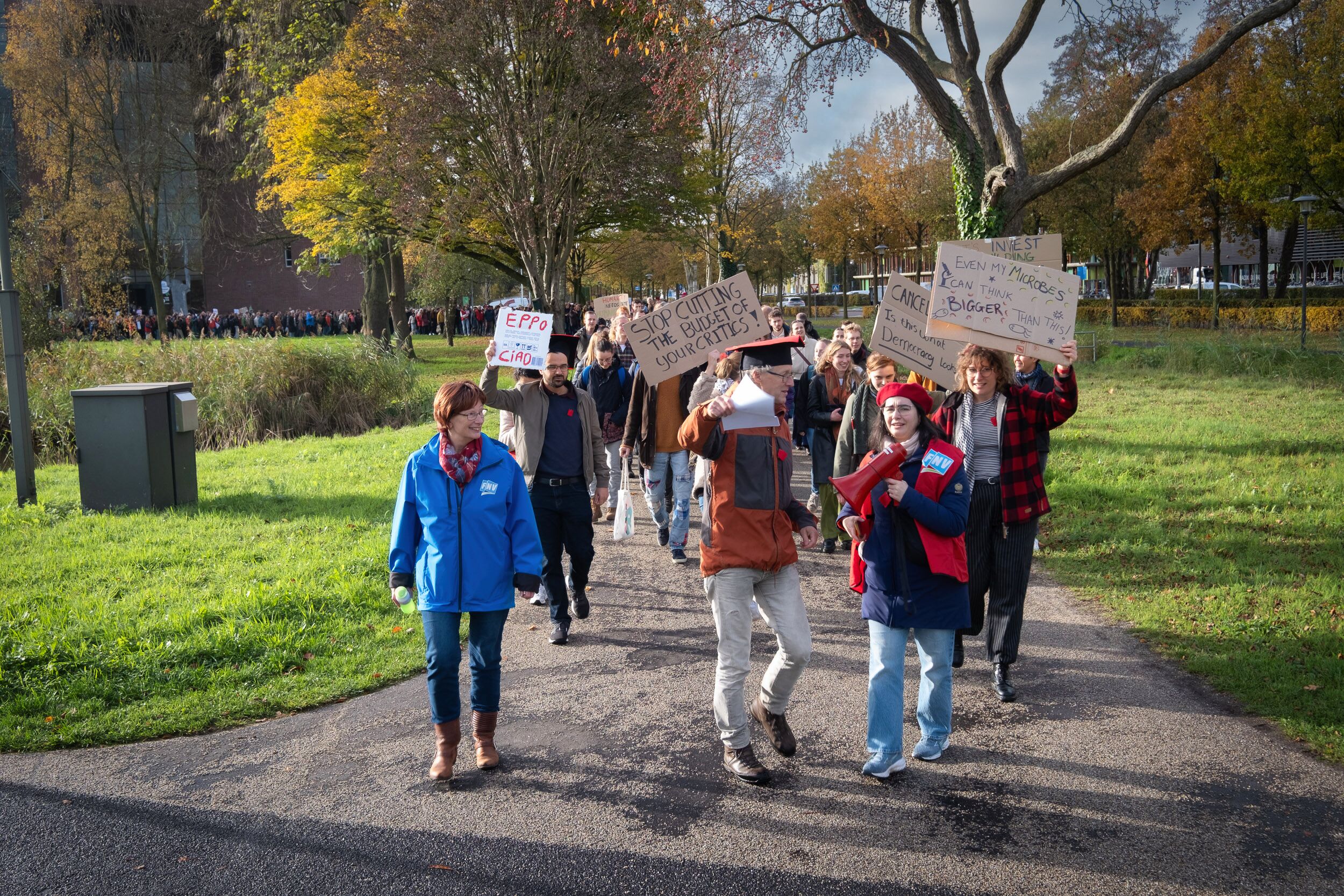From a distance, you might think there’s a party going on. Someone releases a white helium-filled balloon. But this is not a party—just a celebration of science. Under the balloon, a while coffee cup has been mounted filled with sensors. And the crowd is made up of first-year students Soil, Water and Atmosphere. The balloon is a weather balloon that is to map the atmosphere.
The course is Introduction to the Atmosphere. ‘The students are introduced to everything related to the weather, atmosphere, meteorology and air quality’, meteorologist Bert Heusinkveld explains. ‘The students will use the data thus acquired during next week’s lectures. You could simply hand them the data, but this generates more commitment and is much more fun.’
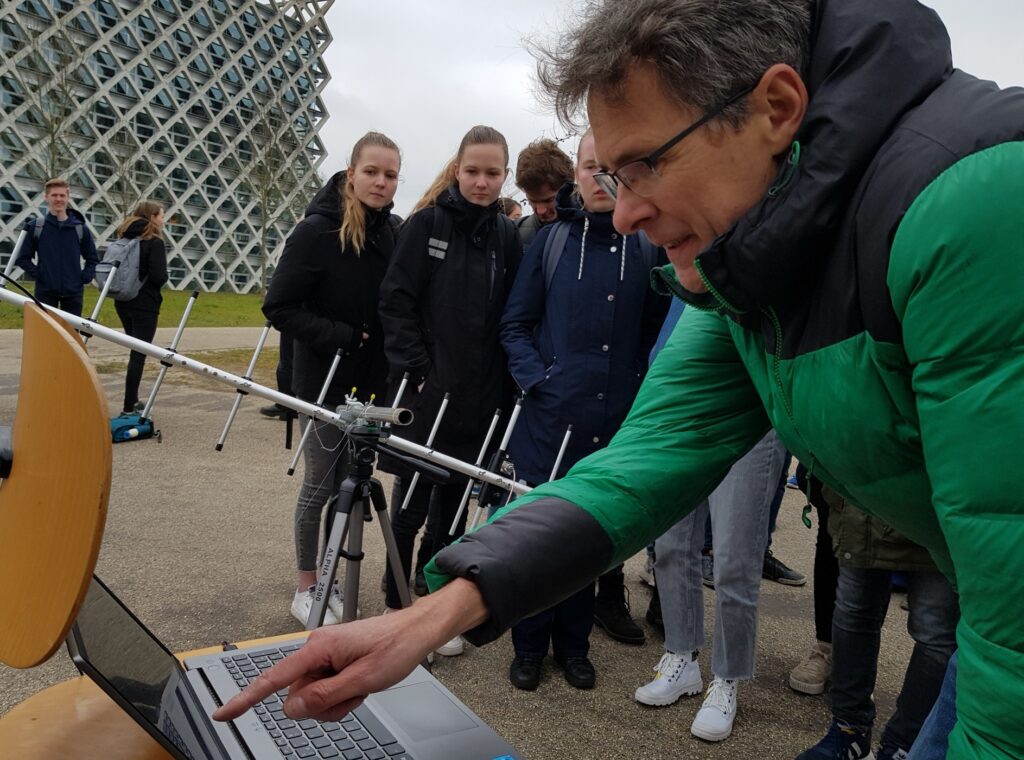
The balloon is released just before eleven o’clock. There is a low cloud cover, and the balloon disappears from sight in under a minute. But the data continues to flow to the laptop. The balloon carries sensors to measure temperature, humidity, altitude, atmospheric pressure and location. A link with Google Earth shows the balloon in 3D and real-time. New data come in every two seconds.
Higher atmospheric layers
‘The GPS enables me to determine the location, and to calculate the wind velocity and direction’, Heusinkveld says. ‘Look, it’s near Renkum now, at some 1600 metres altitude. It is moving due east in the direction of Arnhem. I expect it to deflect north from there due to the airflow in the higher atmospheric layers. That is the same current that carries the Sahara sand in this direction.’
Heusinkveld allows the balloon to ascend to six kilometres. That takes about an hour. He then issues a signal that incinerates the string holding the coffee cup, which he aims to retrieve. The data allows Heusinkveld to release the cup somewhere it can be recovered. ‘I don’t want it ending up in the water somewhere.’
You could simply hand them the data, but this is much more fun
Bert Heusinkveld, Meteorology and Air Quality group
The landing provides the students with a competitive element. They posted their bets on where the balloon would land on post-its. The winner will be awarded an inflatable globe. ‘It ended up in Germany last year’, Heusinkveld says. ‘But there was a strong wind at that time. Now, I wager it will be in Hoenderloo.’

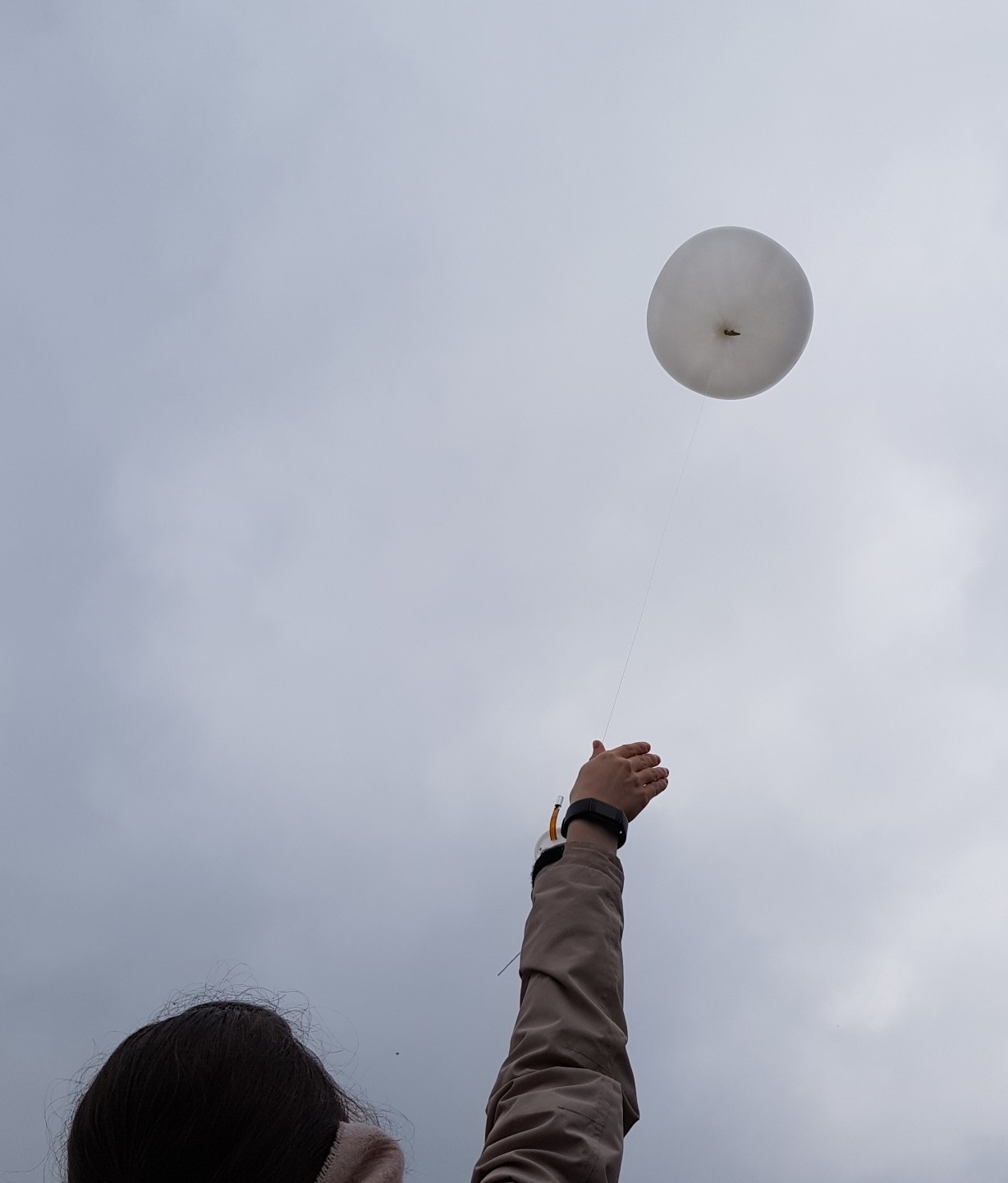 Photo Roelof Kleis
Photo Roelof Kleis 